Mold is more than just an eyesore, it can damage your home’s structure, ruin personal belongings, and cause serious health issues. Mold spores spread quickly in damp conditions, and prolonged exposure can lead to respiratory problems, allergies, and skin irritation.
If you suspect mold in your home or office, a mold inspection Sonoma County is the first step toward a solution. Detecting mold early can save you from costly repairs and potential health risks. In this guide, we’ll walk you through how to check for mold, the signs of mold growth, and when to call a professional mold remediation expert.
How to Check for Mold in Your Home
Mold may have subtle signs that make it hard to detect without inspection. Even if you don’t suspect mold damage Sonoma County in your home, performing a simple annual check and keep your home protected and mold free, helping you and your family avoid the risks of mold exposure.
Perform a Visual Inspection
Start by examining areas of your home where mold is most likely to grow. Mold thrives in damp, dark environments, so check for mold warning signs in:
- Bathrooms (around sinks, showers, and bathtubs)
- Kitchens (under sinks, inside cabinets)
- Basements and crawl spaces
- Attics with poor ventilation
- Areas with past water damage
- Around windows and air conditioning vents
Mold can appear as black, green, white, or even pink spots on walls, ceilings, and floors. If you notice discoloration or fuzzy growth, there’s a strong chance mold is present.
Look for Water Damage and Moisture
Mold needs moisture to grow. If your home has a history of water damage from leaks or flooding, check for:
- Water stains on ceilings or walls
- Warped or peeling wallpaper/paint
- Soft or rotting wood
- Condensation on windows or pipes
A moisture meter can help detect hidden damp areas where mold might be growing behind walls or under flooring.
Test Indoor Air Quality
Mold spores can become airborne, leading to poor indoor air quality. Professionals use air sampling tests to compare indoor air quality to outdoor air. However, you can also conduct a simple DIY test using:
- Home mold test kits (available online or in hardware stores)
- HVAC filter checks: if your filters are clogged with dust and black particles, it could be a sign of mold contamination
Check for Musty Odors
Mold often has a distinct, musty smell. If you notice a persistent earthy odor, especially in basements, attics, or enclosed areas, it could indicate hidden mold. Even if you can’t see it, the smell alone is enough reason to conduct further inspection. In extreme cases, mold infestations may require professional odor removal for complete remediation.
Watch for Health Symptoms
Mold exposure can cause a range of symptoms, including:
- Frequent sneezing, coughing, or congestion
- Skin rashes or irritation
- Watery or itchy eyes
- Worsening asthma or respiratory issues
If symptoms improve when you leave home but return when you come back, mold could be affecting your indoor air quality.
Why You Need a Professional Mold Inspection
If you suspect mold but can’t locate the source, it’s best to call a professional mold inspector. Early mold detection can prevent dangerous effects of mold on your home including expensive structural damage and health risks, making a professional mold inspection a smart investment.
These professional inspections usually involve:
Advanced moisture detection
Using infrared cameras and moisture meters to find hidden leaks
Air and surface sampling
Identifying the specific type of mold present
Comprehensive inspection reports
Outlining areas affected, the severity of the problem, and remediation steps
Legal compliance
Ensuring your home or business meets local mold safety regulations
Signs You Need Immediate Mold Remediation
If you notice any of the following, schedule a mold treatment service immediately:
- Large mold patches covering walls, ceilings, or floors
- Recurrent mold growth despite cleaning
- Strong musty odor that won’t go away
- Ongoing water leaks or high humidity levels
- Household members experiencing unexplained allergies or breathing issues
The Risks of Ignoring Mold Damage
- Structural damage (rotting wood, weakened drywall)
- Contaminated HVAC systems (spreading spores throughout your home)
- Chronic health problems (especially in children, elderly, and those with respiratory conditions)
How Professionals Remove Mold Safely
DIY mold removal can be risky. Improper handling may release mold spores into the air, making the problem worse. That’s why professional mold remediation is recommended.
Professional Mold Removal Process
- Containment: Specialists seal off affected areas to prevent mold from spreading
- Air filtration: HEPA air scrubbers remove mold spores from the air
- Mold removal: Professionals use EPA-approved antifungal treatments
- Moisture control: Dehumidifiers and ventilation solutions prevent future mold growth
- Final testing: Air quality tests confirm complete mold removal
Preventing Mold Growth in Your Home
To keep mold from coming back, follow these mold prevention tips:
- Fix leaks immediately and get water damage solutions as soon as possible
- Control humidity and try to keep indoor humidity levels below 50%
- Ventilate your home and use exhaust fans in bathrooms and kitchens
- Clean and dry spills quickly, mold can begin growing within 24-48 hours
- Use mold-resistant materials, consider mold-resistant drywall or paint in damp areas
Routine home maintenance is key to preventing mold infestations and maintaining good indoor air quality.
Need a Mold Inspection? Contact the Experts at BRC Today!
Mold is a serious issue that requires professional attention. If you suspect mold in your home or business, don’t wait until the problem worsens.
At Bravo Restoration & Construction, we offer expert mold inspections and remediation to ensure your property stays safe and mold-free. Our experienced team uses advanced detection and removal techniques to eliminate mold at its source.
Contact BRC today or give us a call at (707)837-0675 to schedule your mold inspection in Sonoma County.

